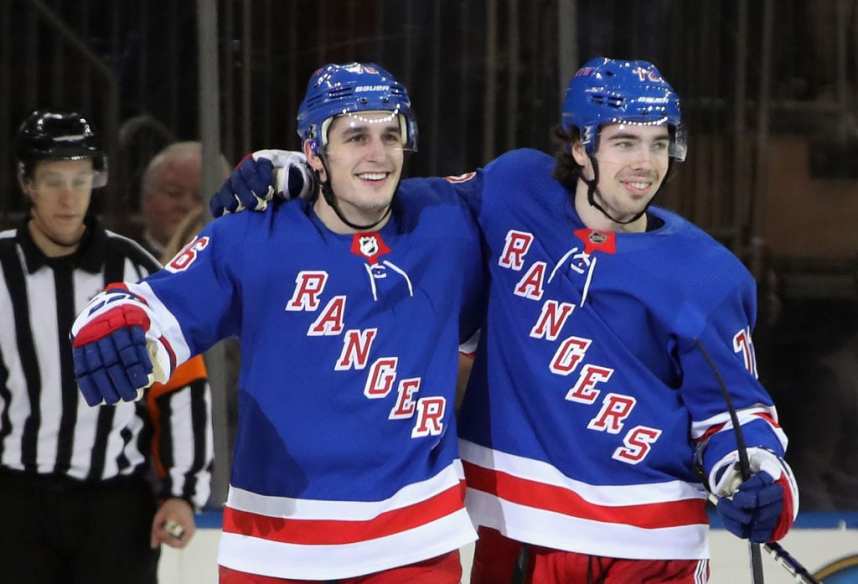
The NHL’s return-to-sport protocol is a very detailed procedure that will be required of the New York Rangers just to get six players working out inside the rink together, never mind what’s still to come when the Blueshirts progress to training camps or actually start playing games again. The protocol distributed to the Rangers, other teams, and players early Monday leaves no detail uncovered and paints a scene unlike any that would typically play out in these facilities.
NHL releases Phase 2 of return-to-sport plan; expects early June roll out.
MORE >> https://t.co/ObdeKuQiTN#HockeyTwitter | #BringSportsBack @FrankDangelo23 pic.twitter.com/XFegbk7dh3
— NextSportStar.com (@NextSportStar) May 26, 2020
So let’s say you are Jericho NY native Adam Fox and you want to start training in the facility. The first thing that must happen before he even steps foot into the facility is to have a swab inserted roughly two inches into his nasal cavity. That test then is sent to a place that can do laboratory-based RT-PCR testing, which will be used to detect any active or recent infection with COVID-19 and will be administered 48 hours prior to even thinking about entering the facility.
That will get Fox into the door of the facility. So, Adam Fox would like to start skating. In order to do that, he must complete a pre-participation medical exam, which includes an EKG test and screening for pre-existing conditions.
Now, it’s time to hit the ice. At best, Fox may be able to skate with New Jersey native Tony DeAngelo, and their fellow defensemen as phase 2 only allow six players on the ice at a time. Without contact. That means that Brendan Lemieux will have to do some “practice fighting” somewhere else. Coaches, including those for skating and skills, will not be allowed.
What happens when they get hungry or thirsty? Players inside the facility can consume Single-use beverages or snacks such as power bars, but any meals prepared and packaged by the catering staff must be taken home before they are consumed.
Whatever group of Rangers practices together, the grouping must remain constant and essentially be assigned a rotating shift for when they are allowed in the facility. Where possible, the Rangers have been told to assign a different athletic trainer, strength and conditioning coach and equipment manager to each group.
So after their practice, Fox, DeAngelo, and the rest of the Rangers would like some post-practice treatment. Not happening. In Phase 2, the players will not be granted access to saunas, hot tubs, or steam rooms and are encouraged to shower at home whenever possible.
So, after all of the players have gone through the facility, the Rangers cleaning staff must get to work. The facility must be thoroughly cleaned and disinfected between each training session. That includes locker-room areas and circuit-based training equipment. Players are required to leave all workout gear inside the facility for cleaning. The cleaning staff could end up being the MVPs of the season.
While all of this is happening, head coach David Quinn will be getting texts that will read something like 98.6. 97.8, or 98.2. While it might be nice to say they are sending him slapshot speeds, they instead will be the recorded temperature checks. During this process, players will have to do at least two more tests each week, plus daily temperature and symptom checks, one done at home, and another from medical personnel upon arrival at the facility.
There could be serious consequences for the Rangers if they do not comply with the measures put in place by the league. The NHL has promised that there could be penalties that include fines, loss of draft choices, and ineligibility to participate in the resumption of play.
This certainly will be a different experience for the Rangers, who mostly haven’t been back inside team facilities since the season was paused on March 12.